Late winter, late in the day, and the bell-like tones, chuckles, whistles and clicks of tui song were to be heard. Up high in some trees (specifically Banksia integrifolia, an Australian native also known as Coastal banksia) several tui were busily feeding, singing and playing - swooping from tree to tree, down to the ground then up to another golden flower spike.
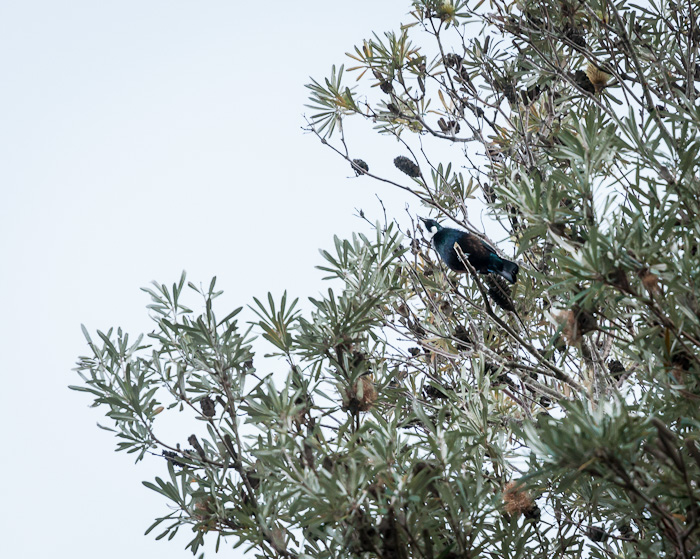
Even though the light was low, and my poor camera struggles in such conditions, I had to snap away...
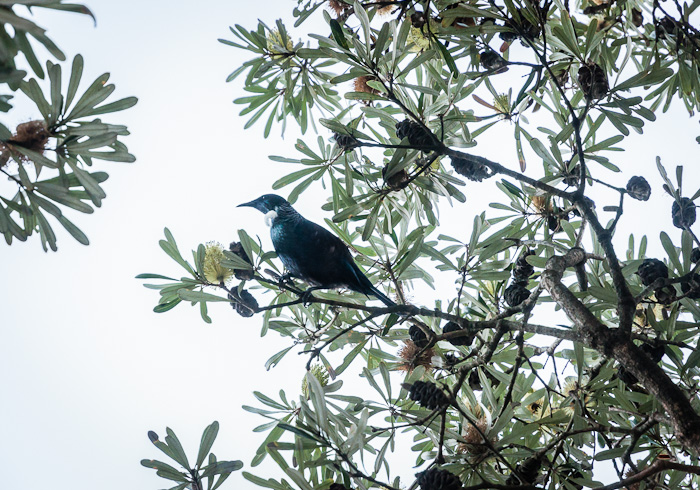
And even though I have had to crop these images furiously to get anything like a close-up, here goes...
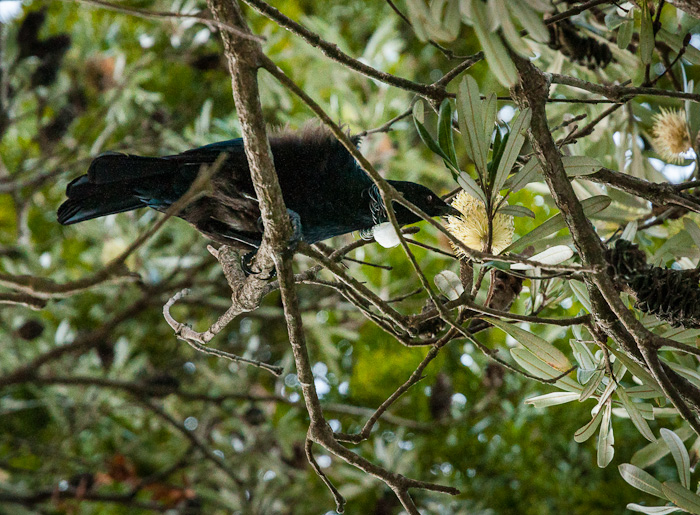
The flower spikes consist of numerous flowers. As they age they change from a greeny yellow to a golden colour, then brown as they fade. Their nectar is a good late-winter food source for the tui before the kowhai and flax start flowering. The slender silver-backed leaves are elegant and wind-hardy.
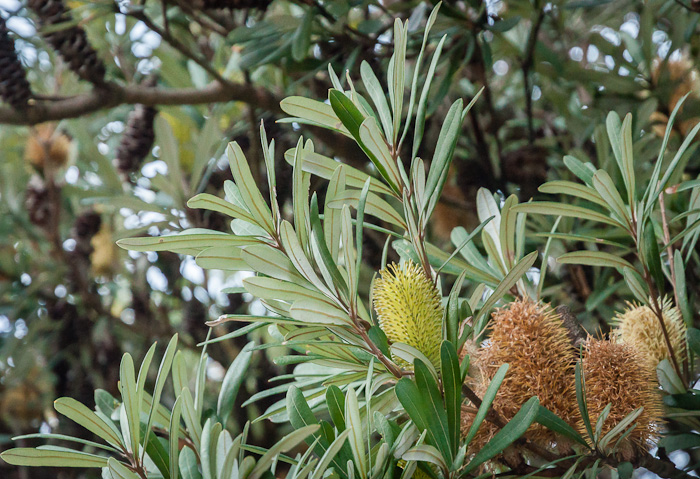
The tui are agile, perching and contorting to get their long beaks into the flowers.
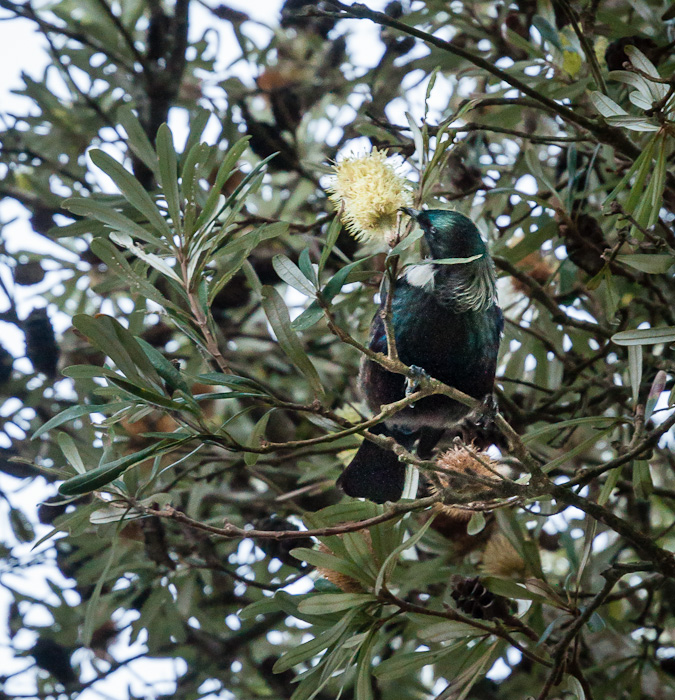
Although they look black, the feathers have a blue-green iridescent sheen which glows when it catches the light. This unexpected colour, the collar of white tendrils around the neck, and the comical white neck tuft that bobs a bit like an "adam's apple" make the tui a distinctive sight.
But what is this one doing in the gutter? Tui can appear drunk on fermented flax nectar, and this bird was being pretty bold - but not intoxicated, just thirsty and letting me see its wonderful plumage.
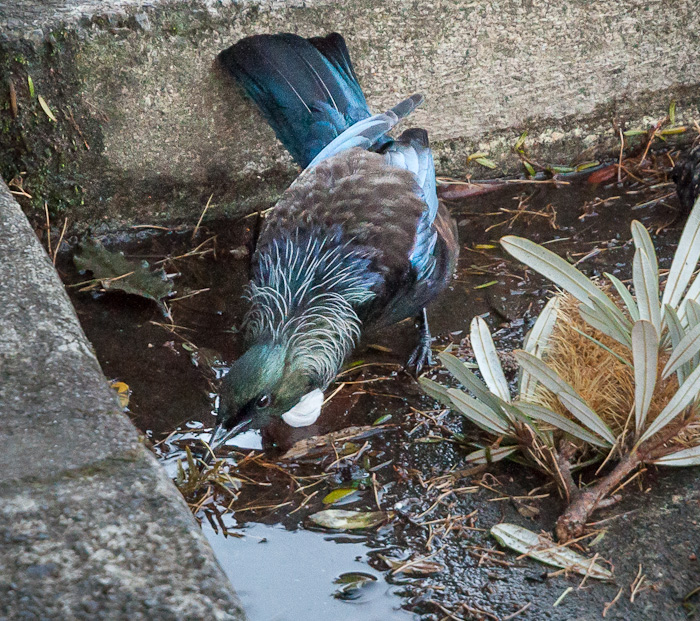
I had a lot of fun. Sorry that the images are not of great quality, but I hope you get some idea of the pleasure of watching these birds in action.